2-(Trifluoromethyl)benzoic acid
Synonym(s):α,α,α-Trifluoro-o-toluic acid;2-Carboxybenzotrifluoride
- CAS NO.:433-97-6
- Empirical Formula: C8H5F3O2
- Molecular Weight: 190.12
- MDL number: MFCD00002476
- EINECS: 207-093-9
- SAFETY DATA SHEET (SDS)
- Update Date: 2025-06-24 21:05:35
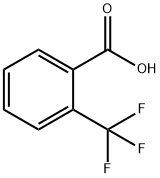
What is 2-(Trifluoromethyl)benzoic acid?
Chemical properties
slightly yellow to yellow-brown crystalline powder
The Uses of 2-(Trifluoromethyl)benzoic acid
2-(Trifluoromethyl)benzoic Acid is used in biochemical genetics studies such as Plasmid-encoded phthalate catabolic pathway in Arthrobacter keyseri 12B.
The Uses of 2-(Trifluoromethyl)benzoic acid
2-(Trifluoromethyl)benzoic acid was used in the synthesis of 1,3,4-oxadiazole derivatives containing 2-fluoro-4-methoxy moiety. It was also used to investigate the binding of 2-pyridinone and amino acid derivative as ligands with chaperones PapD and FimC by surface plasmon resonance and 1HNMR spectroscopy.
Definition
ChEBI: A benzoic acid carrying a trifluoromethyl substituent at the 2-position.
Properties of 2-(Trifluoromethyl)benzoic acid
| Melting point: | 107-110 °C(lit.) |
| Boiling point: | 247 °C753 mm Hg(lit.) |
| Density | 3.375 g/mL at 25 °C(lit.) |
| Flash point: | 247-254°C |
| storage temp. | Sealed in dry,Room Temperature |
| solubility | DMSO (Slightly), Methanol (Slightly) |
| pka | 3.20±0.36(Predicted) |
| form | Crystalline Powder |
| color | Slightly yellow to yellow-brown |
| Water Solubility | 4.8g/L(25 ºC) |
| BRN | 976984 |
| CAS DataBase Reference | 433-97-6(CAS DataBase Reference) |
| NIST Chemistry Reference | «alpha»,«alpha»,«alpha»-Trifluoro-o-toluic acid(433-97-6) |
| EPA Substance Registry System | Benzoic acid, 2-(trifluoromethyl)- (433-97-6) |
Safety information for 2-(Trifluoromethyl)benzoic acid
| Signal word | Warning |
| Pictogram(s) |
 Exclamation Mark Irritant GHS07 |
| GHS Hazard Statements |
H315:Skin corrosion/irritation H319:Serious eye damage/eye irritation H335:Specific target organ toxicity, single exposure;Respiratory tract irritation |
| Precautionary Statement Codes |
P261:Avoid breathing dust/fume/gas/mist/vapours/spray. P264:Wash hands thoroughly after handling. P264:Wash skin thouroughly after handling. P271:Use only outdoors or in a well-ventilated area. P280:Wear protective gloves/protective clothing/eye protection/face protection. P302+P352:IF ON SKIN: wash with plenty of soap and water. P305+P351+P338:IF IN EYES: Rinse cautiously with water for several minutes. Remove contact lenses, if present and easy to do. Continuerinsing. |
Computed Descriptors for 2-(Trifluoromethyl)benzoic acid
| InChIKey | FBRJYBGLCHWYOE-UHFFFAOYSA-N |
New Products
4,4-Difluoropiperidine hydrochloride tert-butyl 9-methoxy-3-azaspiro[5.5]undecane-3-carboxylate Indole Methyl Resin N-Isopropylurea N,N-Dicyclohexylcarbodiimide(DCC) MELDRUMS ACID 5-METHYLISOXAZOLE-4-CARBOXYLIC ACID Magnessium Bis glycinate Zinc ascorbate 1-bromo-2-butyne 2-acetamidophenol 9(10H)-anthracenone Erythrosin B, 4-Piperidinopiperidine 2-((4-morpholinophenylamino) (methylthio) methylene) malononitrile 2,4-dihydroxybenzaldehyde 3-(4-morpholinophenylamino)-5-amino-1H-pyrazole-4-carbonitrile Methyl 2-methylquinoline-6-carboxylate 2,6-dichloro-4-nitropyridine 4-Bromo-2-chlorobenzonitrile 2-(benzylamino)acetic acid hydrochloride 4-(tert-Butoxycarbonylamino)but- 2-ynoic acid 3,4-dihydro-2H-benzo[b][1,4]dioxepine 1-Phenyl-1-cycloprppanecarboxylicacidRelated products of tetrahydrofuran
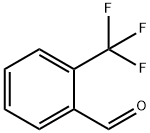
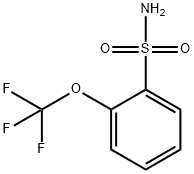

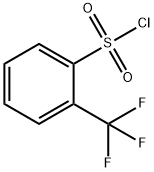
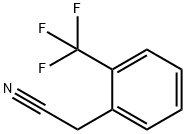
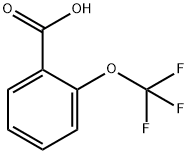
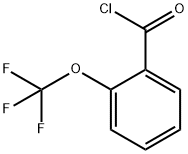
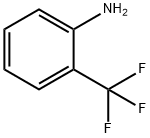
You may like
-
 2-(Trifluoromethyl)benzoic Acid CAS 433-97-6View Details
2-(Trifluoromethyl)benzoic Acid CAS 433-97-6View Details
433-97-6 -
 2-(Trifluoromethyl)benzoic acid, 98% CAS 433-97-6View Details
2-(Trifluoromethyl)benzoic acid, 98% CAS 433-97-6View Details
433-97-6 -
 2-(Trifluoromethyl)benzoic acid CAS 433-97-6View Details
2-(Trifluoromethyl)benzoic acid CAS 433-97-6View Details
433-97-6 -
 3-(4-amino-1-oxoisoindolin-2-yl)-1-methylpiperidine-2,6-dione 98%View Details
3-(4-amino-1-oxoisoindolin-2-yl)-1-methylpiperidine-2,6-dione 98%View Details -
 20677-73-0 (2,2-diethoxyethyl)methylamine 98%View Details
20677-73-0 (2,2-diethoxyethyl)methylamine 98%View Details
20677-73-0 -
 3-(4-(hydroxyamino)-1-oxoisoindolin-2-yl)piperidine-2,6-dione 98%View Details
3-(4-(hydroxyamino)-1-oxoisoindolin-2-yl)piperidine-2,6-dione 98%View Details -
 57381-49-4 2-bromo-4-chlorobenzonitrile 98%View Details
57381-49-4 2-bromo-4-chlorobenzonitrile 98%View Details
57381-49-4 -
 4,6-dichloropyrimidine-5-carbaldehyde 98%View Details
4,6-dichloropyrimidine-5-carbaldehyde 98%View Details
5305-40-8
Statement: All products displayed on this website are only used for non medical purposes such as industrial applications or scientific research, and cannot be used for clinical diagnosis or treatment of humans or animals. They are not medicinal or edible.
